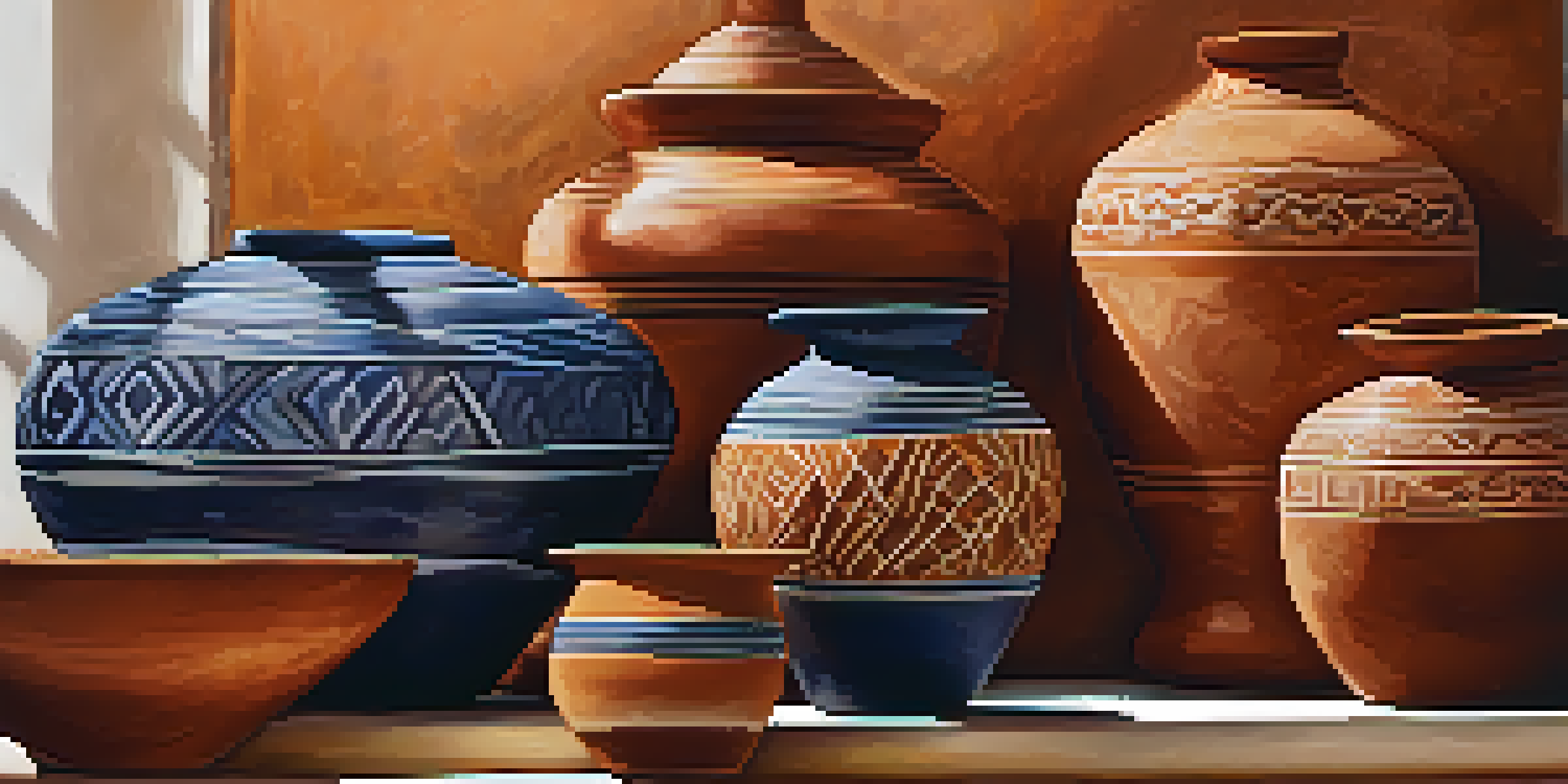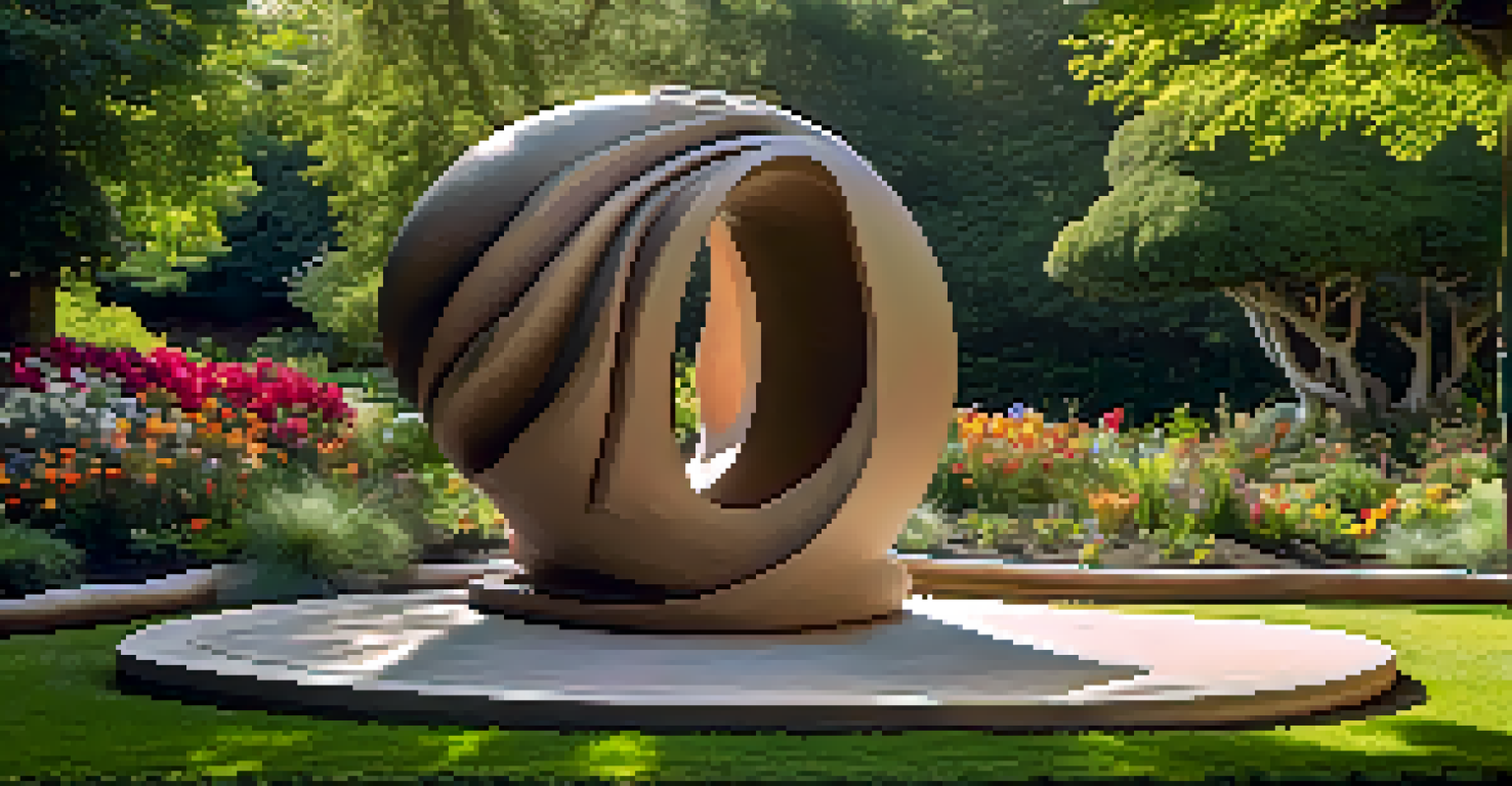Understanding Different Types of Clay Used in Ceramics

The Basics: What is Clay and Why It Matters
Clay is a natural material composed of fine-grained minerals and organic matter. It's primarily formed through the weathering of rocks and is known for its plasticity when wet, allowing artisans to mold it into various shapes. Understanding clay is crucial for ceramic artists, as the type of clay used can significantly impact the final product's texture, durability, and appearance.
Clay is the most versatile material in the world. It’s a material that can be molded into anything, and it's a blank canvas for creativity.
Different clay types offer unique properties that cater to various artistic and functional needs. For instance, some clays are better suited for intricate details, while others are more resilient for functional ware. This diversity allows ceramists to choose the right clay for their specific project, ultimately influencing the design and utility of the piece.
Moreover, knowing the characteristics of different clays helps in achieving desired firing results. Each type of clay has a distinct firing temperature, which affects everything from color to strength. Therefore, understanding the basics of clay lays a solid foundation for any ceramic endeavor.
Earthenware: The Versatile Choice for Beginners
Earthenware is one of the oldest types of clay used in ceramics, known for its low firing temperature and porous nature. This makes it an excellent choice for beginners, as it’s relatively forgiving and easy to work with. Artists often appreciate its vibrant colors and ability to retain moisture, making it ideal for decorative pieces and functional pottery.

One of the standout features of earthenware is its ability to absorb glazes, which creates beautiful, intricate finishes. However, this clay type is relatively fragile, so it's not the best option for items meant to withstand heavy use. Despite its limitations, earthenware remains a popular choice for those who enjoy the charm and character it brings to handmade items.
Understanding Clay Types is Key
Different types of clay possess unique properties that significantly affect the texture, durability, and appearance of ceramic pieces.
To enhance its durability, earthenware can be glazed or fired at higher temperatures, transforming it into stoneware. This versatility allows ceramists to experiment and find their unique style, all while enjoying the ease of handling earthenware.
Stoneware: Durable and Functional for Everyday Use
Stoneware is a robust clay known for its strength and durability, making it perfect for functional pottery like plates and mugs. Fired at higher temperatures than earthenware, stoneware becomes non-porous, which adds to its appeal for everyday use. This versatility allows artists to create both decorative and utilitarian pieces without compromising quality.
Art is not what you see, but what you make others see.
The texture of stoneware can vary, offering a range of finishes from smooth to sandy, depending on the specific type of clay used. Its natural earthy colors and ability to hold heat well make it a favorite among potters who want to create functional items that are also aesthetically pleasing. This makes stoneware an essential choice for anyone looking to craft lasting pieces.
Additionally, stoneware's resilience to thermal shock means it can transition from oven to table without fear of cracking. This practical trait aligns with the growing trend of functional art, where beauty meets everyday utility, providing artists with the inspiration to innovate.
Porcelain: The Elegance of Fine Ceramics
Porcelain is often regarded as the 'queen' of ceramics due to its delicate appearance and smooth finish. This type of clay is made from kaolin, which is fired at extremely high temperatures, resulting in a non-porous and translucent material. Its elegant look makes it a popular choice for fine dinnerware and decorative items.
One of the challenges of working with porcelain is its sensitivity; it requires skill and precision to shape and fire correctly. However, the results can be stunning, as porcelain can showcase intricate designs and vibrant glazes. Artists often revel in the challenge, as the end products radiate beauty and craftsmanship.
Choose Clay Based on Project Needs
Selecting the right clay involves considering the intended use, desired finish, and firing temperature to ensure a successful outcome.
Moreover, porcelain's ability to withstand high temperatures makes it ideal for both decorative and functional ware. From teacups to sculptures, this clay offers a unique blend of strength and elegance, capturing the hearts of both potters and collectors alike.
Raku: A Unique Firing Technique for Artistic Expression
Raku is not just a type of clay but also a distinctive firing technique that produces striking and unpredictable results. Originating in Japan, this method involves removing pottery from the kiln while it is still glowing hot and placing it in combustible materials. This process creates unique colors and textures, making each piece one-of-a-kind.
The clay used for raku is typically a type of earthenware that can withstand the thermal shock of the firing process. Artists often embrace the surprising outcomes that arise from raku firing, as the smoke and flames interact with the glazes to create beautiful effects. This spontaneity adds an element of excitement to the pottery-making process.
Raku pieces are primarily decorative due to their porous nature and lower firing temperature. However, many artists enjoy the challenge of creating functional items that still embody the raku aesthetic. This fusion of art and utility makes raku an exciting avenue for creativity in ceramics.
Sculptural Clay: Ideal for Artistic Creations
Sculptural clay is specifically designed for artists who want to create three-dimensional forms, making it an excellent choice for large-scale sculptures and intricate designs. This type of clay typically has a higher plasticity, allowing for detailed work without cracking during the drying process. Its versatility lets artists explore a range of techniques, from hand-building to molding.
Unlike traditional pottery clay, sculptural clay often remains porous even after firing, which can add character to the final piece. This quality allows for various surface treatments and finishes, giving artists the freedom to express their creativity fully. Additionally, sculptural clay can be used for both indoor and outdoor sculptures, expanding its usability.
Experimentation Enhances Ceramic Skills
Trying out various clays allows artists to discover their unique style and develop a deeper appreciation for the art of ceramics.
One of the joys of working with sculptural clay is the ability to experiment with form and texture. Artists can incorporate mixed media or experiment with different finishes, resulting in unique pieces that truly reflect their artistic vision. This adaptability makes sculptural clay a favorite among artists looking to push the boundaries of traditional ceramics.
Choosing the Right Clay for Your Project
When embarking on a ceramic project, choosing the right type of clay is crucial. Factors such as the intended use of the piece, desired finish, and firing temperature all play a role in this decision. By understanding the unique properties of each clay type, artists can select the most suitable option for their creative vision.
For functional items, stoneware and porcelain are often preferred due to their durability and strength. On the other hand, earthenware is great for decorative pieces, while raku offers a unique aesthetic for those looking to create one-of-a-kind art. Assessing the intended purpose of the item will guide you toward the best clay for your needs.

Ultimately, experimentation is key in discovering what works best for you as an artist. Many ceramists enjoy trying different clays for various projects, learning how each type reacts during the shaping and firing process. This journey of exploration not only enhances skills but also fosters a deeper appreciation for the craft of ceramics.